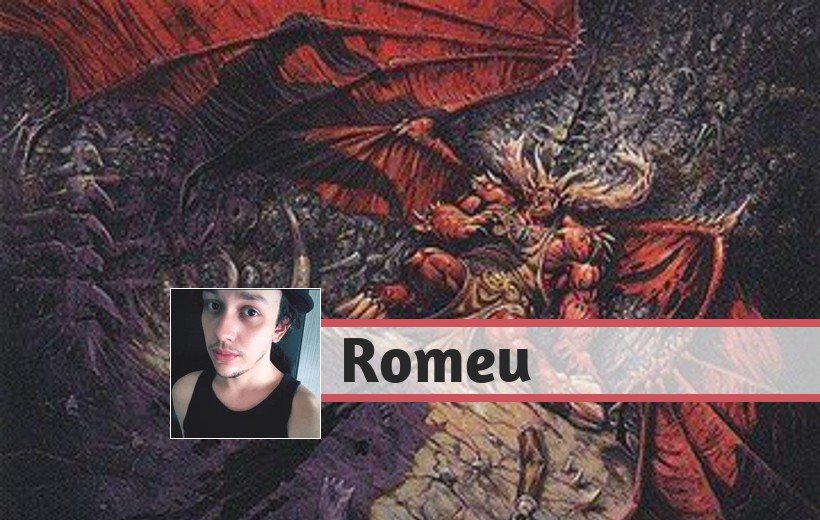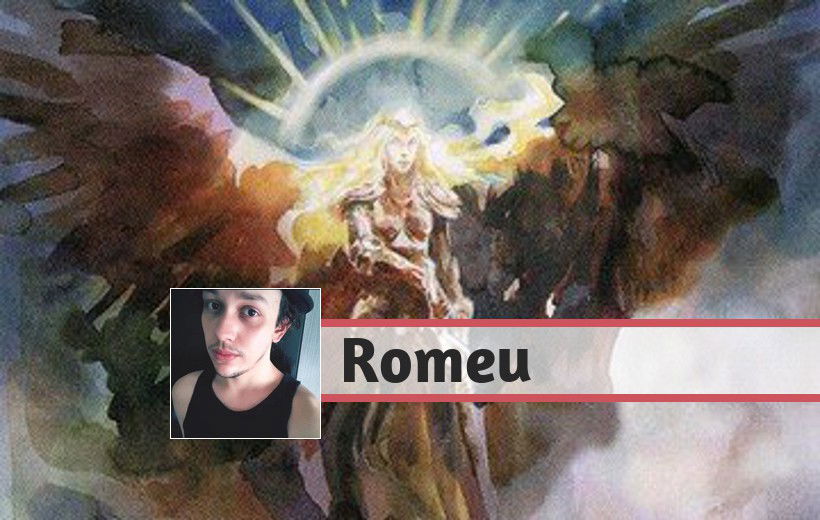Welcome to Throwback Magic, a totally improvised idea.
One of my greatest fascinations with Magic: The Gathering is the game's history, not only in lore but also the history of the game itself as archetypes, events, updates, players, among several other points that make us better understand the game from which we have dedicated so much of our time, and it already has a vast history in its 28 years of existence.
Therefore, I'll be looking to further deepen my content on the game's historical moments, and one of the best ways to tell these stories is through the decks used by players in major events and that left their mark on Magic's trajectory.
Ad
Today, I'll be talking about one of the decks that I had the pleasure of witnessing, even in my early years of Magic, make its mark in history: Cruel Control, piloted by the French player Gabriel Nassif, winner of Pro Tour Kyoto in 2009.
The History
It was the Lorwyn-Alara Standard era (Lorwyn/Mornigntide + Shadowmoor/Eventide + 10th Edition + Shards of Alara/Conflux), Faeries was the best deck of the format since last Standard, having several good places in high level competitive events and was one of the favorite decks of many of the top professional players at the time due to its mix of consistency, challenging plays and great synergy between its cards, which made it one of the most complex archetypes to master, but also one of the most rewarding in doing so.
With a predominant deck for two seasons in a row, Wizards began printing punctual responses in their sets to deal with the archetype, a practice that was extremely common at a time when banned and restricted announcements on Standard were a huge taboo for the community and for Wizards itself.
Enter Standard, with Conflux, Volcanic Fallout.

It may seem strange, but while Cruel Control already existed prior to Conflux, it was the inclusion of Volcanic Fallout that gave the archetype the element it needed to play a more active role in the Metagame, offering a clean response inside a more tangible color combination for the deck (which previously needed to invest a larger amount of green mana to use Cloudthresher to deal with Faeries), for a lower cost and that could not be countered.
In that same format, there was another range of decks that used small creatures to win the game against the various decks that sought to win through 1-for-1 exchanges, especially the White-Based Aggro, which abused cards like Spectral Procession and low-cost drops along with Glorious Anthem, especially the Boros decks which included the combination of Reveillark with Siege-Gang Commander and Ranger of Eos with Figure of Destiny, and the BW Tokens decks that used aggressive threats alongside disruptive elements like Thoughtseize and Tidehollow Sculler to have an edge on grindy matchups
The Pro Tour Kyoto finals, where this deck made history, was precisely a game between BW Tokens, piloted by the well-known Luis-Scott Vargas against the famous Cruel Control, piloted by Gabriel Nassif. But it was at the quarterfinals that one of the most epic moments in Magic history happaned.
Nassif was up against Matteo Orsini Jones, who was also participating in the event playing BW Tokens, in games that were relatively well-balanced in a Best of 5.
With both players tied and playing the last game, Matteo had managed to trade his resources well against Nassif, using discards to deal with Cryptic Command, using Path to Exile to remove blockers and establishing strong pressure on the board with Mutavault and Burrenton Forge-Tender.
Before bringing Nassif to 4 life, and coming within an attack of advancing to the semifinals, Matteo cast Thoughtseize, revealing only a Reflecting Pool in Nassif's hand, and passing the turn, Gabriel Nassif drew his card without looking at it, began to rearrange his lands, and you can check the epic ending of this story in the video below.
Ad
This moment is one of the most symbolic in Magic's history to date, and led Cruel Control to become one of the most famous decks in the game for a long time.
The Deck
The list, formerly known as Five-Color Control, was initially developed by Patrick Chapin, Guillaume Wafo-Tapa and Manuel Bucher even before Conflux was released, where the archetype bet on greater access to green with Cloudthresher, used Wrath of God and also featured the planeswalkers Ajani Vengeant and Liliana Vess, and some lists used to run Nucklavee to recast their spells.
Gabriel Nassif's list, however, was a more up-to-date version, using Conflux additions as Volcanic Fallout and also Wall of Reverence as a card that allowed the deck to hold Aggro decks when used in set with Plumeveil in their respective turns.
The deck sought to abuse the interaction of Vivid Lands (like Vivid Creek) with Reflecting Pool, where a land that said, “add one mana of any color” allowed Reflecting Pool to generate mana of any color.
That way, in conjunction with Filter Lands such as Mystic Gate and Cascade Bluffs, the deck was able to have access to consistent means of playing Volcanic Fallout or Esper Charm on turn 3 or 4, Cryptic Command on the next turn, Broodmate Dragon and Cruel Ultimatum, all within their respective curve and usually with no problem at all, as the manabase was a great enabler for these cards.
The deck contained several elements to deal with the Metagame at the time, such as a copy of Celestial Purge to deal with Bitterblossom and Ajani Vengeant with the same card, and Pithing Needle, which worked against a wide range of Planeswalkers, which were relatively new at the time and didn't have as many ways to interact with them and also against other cards like Figure of Destiny or Mutavault.
Its game plan was essentially the classic plan of every Control deck: Make favorable trades, accumulate card advantage, respond to opponent threats with removals and counters, and then start dropping bombs like Broodmate Dragon and Cruel Ultimatum to close the game in a few turns.
Maindeck

Mulldrifter is now a card that sees play exclusively on Pauper in decks like Tron, Jeskai Ephemerate and Familiars, but the card was a major staple for Cruel Control in 2009, in a format where you pay three mana to draw two cards and have a body to return to the hand with Cruel Ultimatum was important to the deck's synergy, while playing it for five mana in an already stabilized game allowed the deck to maintain its cards flowing while establishing a slow but necessary clock to win the game.

The Lorwyn-Alara Standard had a significant number of decks that tried to attack with small creatures that grew up with tribal lords like Scion of Oona or with massive pumps like Glorious Anthem and Ajani Goldmane, and on this occasion, Plumeveil was the perfect blocker as it was a 4/4 creature with Flash, often serving as a “removal” that stayed in play to block other opponent's creatures, saving enough time to that the archetype could turn the tables.
Ad
Plumeveil also had overwhelming interaction with Wall of Reverence, an addition to the deck that not only held attacking creatures very well, but allowed the deck to gain a significant amount of life alongside the another wall, gaining even more time to stabilize the game.

Every control deck needs finishers, and in a world where Planeswalkers weren't the game-winning machines they are today and there weren't even cards that could perform multiple functions simultaneously while also serving as winconditions, Broodmate Dragon was the best option, mainly because it produced two bodies that didn't die to Agony Warp and one of which also didn't die to Terror, besides setting together a three-turn clock against an opponent who would ordinarily have already spent all of their resources.

The deck's namesake card has never used with more than three copies in the lists, especially because it's a bad to have multiple copies in hand, since it was your turn 7 play.
Cruel Ultimatum is one of the most devastating examples of Card Advantage in Magic, as it essentially offered a 10-for-1 (draw three cards and the opponent discards three, return a creature from your graveyard to your hand and the opponent sacrificing a creature, in addition to gaining five life while the opponent lost five life), and thus the card was able to both seal the game, as few players could come back from a resolved Cruel Ultimatum, as make its controller instantly jump back into the game with a single card, as Gabriel Nassif did several times during the Pro Tour.

Broken Ambitions was the best early game counter the format had, and its Clash ability often made it relevant by giving players a pseudo "Scry 1" allowing its controller to have better control from the top of their deck.
Cryptic Command is considered to this day one of the best counterspells in the game, and was considered the best card of the format at the time, along with Thoughtseize and Bitterblossom.
A spell as flexible as Cryptic Command allowed the deck to gain more time to turn the tables or seek out the needed sweeper against aggressive decks, while serving as an unconditional response against whatever slower decks sought to cast.
The card was a staple in virtually every blue deck of the format, and much of Faeries' success had to do with the fact that the deck had Bitterblossom, Thoughtseize, and Cryptic Command at its disposal.

Interestingly, the most important module of Esper Charm was destroying enchantments, as it solved the biggest threat of the format at the time: Bitterblossom, and being able to dedicate maindeck slots with a card that was highly efficient in dealing with the enchantment, but was never useless on most occasions, made Esper Charm a great addition to any deck looking to play reactively.
As Glorious Anthem was also widely used at the time and a combination of the enchantment with Ajani Goldmane or two copies of the enchantment resolved the threat of Volcanic Fallout for small creature decks, Esper Charm had a value even greater added when dealing with the enchantment, as it kept the opponent's creatures in the “sweeper zone” while significantly lowering their clock.
Ad

The Faeries Killer.
But it wasn't just Faeries that were affected by the card, as there was a significant amount of competitive decks that used small creatures to win the game quickly.
That's not to say the card was perfect for the Metagame: decks like Doran, The Siege Tower could simply ignore the card's existence as their creatures naturally had high toughness, making it irrelevant.

The deck's one-ofs were conditional cards that you commonly wanted only in specific games.
Celestial Purge had many useful targets in the format and commonly the other lists used more than one copy on the maindeck as it dealt with Bitterblossom, Figure of Destiny, Doran, the Siege Tower, among several other cards for only two mana, being a very flexible answer.
Terror was the only targeted removal of the deck, which relied heavily on favorable 2-for-1 exchanges to stabilize, and had a significant amount of valid targets at crucial moments in the game.
Finally, as mentioned earlier, Pithing Needle was one of the few ways the format had to deal with Planeswalkers, while its usefulness also served for cards with activated abilities like Mutavault, Figure of Destiny or other permanents.


As mentioned earlier, the deck sought to abuse Reflecting Pool's interaction with lands that had conditional means of adding mana of any color, such as Vivid Lands, to make its manabase stable.
Despite entering the battlefield tapped, Vivid Lands were the heart of the deck, as they used to be their play in early turns and allowed the deck to access any color of mana for at least two turns, even without Reflecting Pool.
Exotic Orchard, now commonly used in Commander decks, also allowed Reflecting Pool to add mana of any color, and it wasn't usually a land that was bad in the archetype as other decks usually used colors of which the deck wants to have the necessary mana sources on the right turns.

However, the deck's manabase wasn't just with synergetical multicolored lands: Filter Lands allowed the deck to use its spells at the right timing by adding mana of different or equal colors, and being very well-used with the ability of Vivid Lands, serving like a glue that could join the interaction of multicolored manabase with the demand of two or more colors the deck contained with Volcanic Fallout, Plumeveil, Esper Charm, or Cruel Ultimatum.
Sideboard

Conditional counters are common in Magic decks to this day, and Negate has been a major staple since its release on Morningtide.

Although Volcanic Fallout was a great sweeper, it wasn't perfect.
First, it didn't deal with all creatures and was a little useful card against decks that used bigger creatures, like Doran decks, for example, which brought great difficulties to the deck since it has very few targeted interactions.
Ad
Second, Burrenton Forge-Tender was commonly used as a maindeck or sideboard by Non-Faerie decks where Volcanic Fallout was good, opening up a window of opportunity for opponents to easily play around the card.
Wrath of God and Infest seek precisely to cover these two weaknesses that the archetype had when dedicating its main sweepers slot to dealing with the format's main threat at the time.

Another relic from a simpler past, Scepter of Fugue was a good option for attrition matchups where getting more card advantage than the opponent was extremely relevant.
Today the artifact may seem like a poor option for Standard, but the card was the best way, for a low cost (thus giving less opportunity for the opponent to respond or opening up opportunities to resolve it with a counter backup), to gain a significant advantage by removing an important resource from the opponent's hand every turn while stacking your resources with the other cards on the list.

There weren't many threats that protected well against removals at the time and could be used both proactively and reactively, but Wydwen, the Biting Gale did a good job of being an effective threat and blocker that could be bounced to the hand on a recurring basis to delay the opponent's game, while serving as a way to set a clock with Flash that protects itself when you needed to speed up your clock.

Wispmare was essentially a Disenchant with a 1/3 body with Flying, something relevant against Bitterblossom decks.
I've already mentioned the importance of Celestial Purge in that format above, and an additional copy on Sideboard seems to me more than mandatory at the time.
Legacy
Unfortunately, Cruel Control's legacy was short-lived: Alara Reborn brought Cascade to the format, while M10 brought cards like Lightning Bolt that would eventually make Jund one of the main competitors in the Metagame and the best post-rotation deck.
Cruel Control gained good additions such as Baneslayer Angel and continued to do results until Lorwyn's rotation stripped the deck of its extremely flexible manabase and, most importantly, Cryptic Command which allowed the deck to keep up with the 2-for-1 effects proposed by Jund.
In the next Standard (Alara-Zendikar), the deck simply didn't have the necessary elements to keep up with the other decks of the format without these cards and with a worse manabase that didn't allow easy access to white, while it needed to bet on bad counterspells like Double Negative to match the speed and 2-for-1 effects in the format, and not even Jace, the Mind Sculptor helped the archetype, as the UW Control versions were much more efficient winning games since they had easy access to cards like Baneslayer Angel and Day of Judgment, and the inclusion of Spreading Seas in these decks also didn't contribute to the greedy plan to play with Cruel Ultimatum.
Ad
When Modern was announced, several players tried to assemble Cruel Control lists in the format, and although the deck contains all the necessary elements, casting a Cruel Ultimatum did not compare to the most viable options existing in the format, ending up being an obsolete option within Competitive Magic.
Today, you can find some Commander lists that use Cruel Ultimatum or even try to reproduce a play style similar to what the deck used to have.
Conclusion
That was my analysis of Cruel Control, a deck piloted by Gabriel Nassif to win the Pro Tour Kyoto 2009 and became known worldwide in Magic history for its fascinating topdeck in the quarterfinals of the event.
If you liked this content, leave your comment below, and in this way I will try to make this series a weekly column for Cards Realm!
Thanks for reading!








— commentaires0
Soyez le premier à commenter